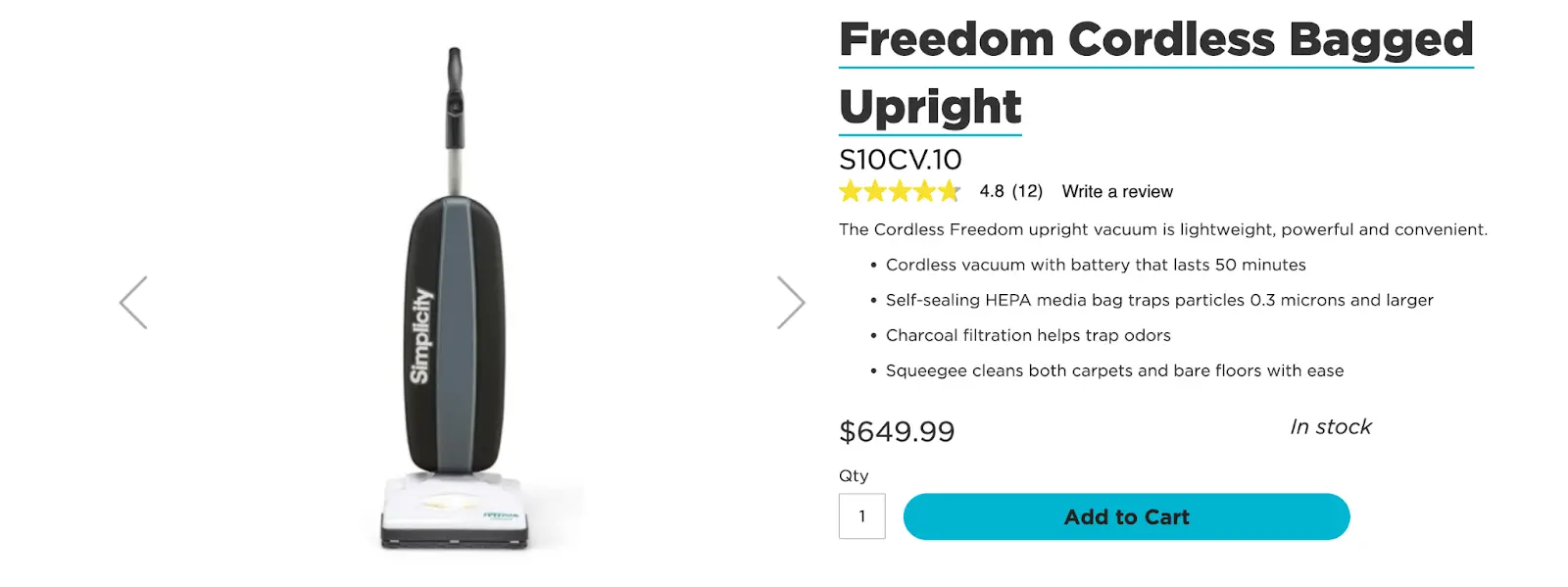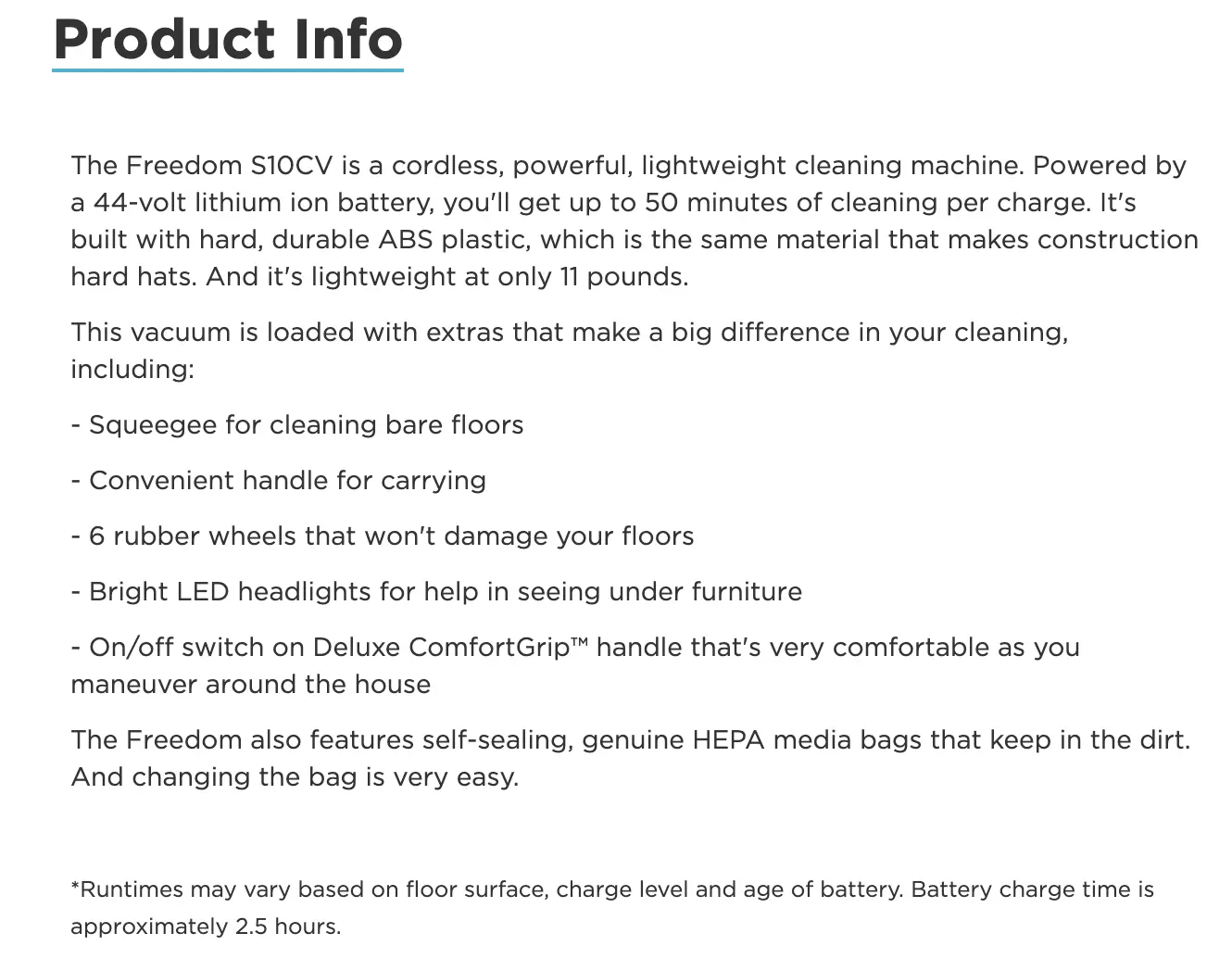Product Copywriting: The Keys to Writing Product Descriptions That Sell
If your business depends on people finding your website and sending you money in exchange for goods, then you’ve got your work cut out for you. It’s a simple premise, but convincing a faceless user or email address to pay for something they can’t touch or see up close is easier said than done.
The truth is, they might spend a few seconds or a couple of minutes on your product page, and if it’s not connecting with them, they’re off to your competitor’s site to see if they can do any better. And without being able to read the customer’s face, answer questions, “speak with the manager to work something out,” or relate to them in any capacity, you had better be sure your content marketing skills are up to the challenge of product copywriting.
What is Product Copywriting?
In its most basic form, product copywriting is the verbiage you craft to describe a product and convince a site visitor and prospective buyer to make a purchase. But your words should do more than merely describe a product’s attributes.
Effective product copywriting should tell a story, draw the reader in, and bridge the gap between the buyer’s needs and the solutions inherent in the product. Captivating product copywriting is key to building your audience and driving sales, whether capped at 150 characters, 3,000 words, or anywhere in between.
Getting Started: What to Know Before Writing Product Descriptions
At face value, product copywriting isn’t necessarily hard. However, it’s best to approach it with the right strategy – not just copy/paste what the manufacturer provided. Effective product copywriting takes a deeper understanding of your audience and advanced writing experience (beyond the occasional college essay). And no matter how much time and energy you put into your content, there is always room for improvement.
Here are some key tactics every product copywriter should keep in mind to set the foundation for copy that sells:
Know Your Audience
You’re not marketing to every single person on the planet, so don’t try to make your product copy broad enough to resonate with everyone. It’s impossible. Ensure you fully understand your key demographic so you can speak to them directly using the language, tone, and references that will truly resonate. If you don’t have them already create some audience personas to visualize better who you’re selling to so you can craft effective communication.
Know Your Product
You can’t expect to effectively sell something if you don’t fully understand it yourself. Take some time to get hands-on experience with the product, if possible. For products you are selling directly from the manufacturer, read through user reviews, watch available product demonstration videos, or reference resource materials to help give you the full picture. Your goal is to create a product description that helps the user visualize themselves using it, so sharing the information you can only gain from experience with the product will help build trust and encourage the user to make a purchase.
Writing Copy: Crafting Descriptions That Appeal to Buyers
Once you understand your audience and the product, it’s time to start writing. One of the biggest challenges you may face in product copywriting is ensuring all of the relevant information the buyer wants and needs is in the description. You can do this by answering the following questions for each product before you get started:
- Who are the typical buyers of the product?
- What about the product makes the buyer happy?
- What feelings should the product evoke for the buyer?
- How does the product solve a problem or fulfill a need?
- What makes the product different or better than competing products?
- What information is vital for the buyer to know?
Answering these questions for every product may take some time, but it will be worth it once you get to the writing. You’ll know you’ve answered everything the buyer wants, and it’s already organized for you to reference as you go.
As you begin fleshing out your product descriptions, there are some best practices you should be sure to follow:
Keep it Concise and Easy to Read
Realistically, you only have a few seconds to hook your readers before they’re gone for good. Chances are, they’re not looking for an anthology. Ensure your copy connects with them in the first sentence or two and break down the rest for easy readability. Be sure to also break down the content into more digestible sections. Use images, bulleted lists, bolded text for emphasis, and sectioned paragraphs.
Use High-Quality Imagery
If you are using product images (which, let’s be honest, you should be), ensure the photos are high quality. Product photos should be taken in bright, natural light, high resolution (people like to zoom in and see those details), and showcase the product from multiple angles. For products that need to showcase dimensions, try to get images of someone using or holding the product for adequate perspective for the user. If you have the budget, invest in an experienced product photographer who knows how to capture product images in an appealing way.
Include the Basics
While you can’t do the basics ONLY, ensure you include relevant information like size, weight, colors, and materials in your product description. All the fancy copywriting in the world won’t convince me to buy a bookshelf that won’t fit in my living room or to order a genuine wool sweater if I’m allergic. In addition to these basics, you can add some little extras that boost consumer trust, such as noting if the product is made locally, organically, or using fairly traded materials.
Simplicity Vacuums offers an excellent example of including the basics of their product. For their Freedom Cordless Bagged Upright vacuum model, the initial product description offers four main bullet points that appeal to potential buyers:

They immediately touch on the major basic information that is most useful to their customers. This is the kind of basic information customers are looking for in a new vacuum, and they want visitors to know it’s exactly what they are offering.
Highlight the Benefits
Spell it out for your customer. What does your product offer that similar products do not? Why do I need it right away? What problems will it solve? How much happier will they be after owning your product? Don’t just describe it. SELL it! Focus on a particular customer and their unique challenge with similar products. You are working to persuade them to purchase, informing them exactly why it is they need your particular product and not an alternative.
Sticking with our same Simplicity Vacuums example, they continue their product description with additional basics, but this time, highlighting the benefits those basic features offer:

Again, this information lays out the basic features of the vacuum, but it also discusses its benefits and the challenges it overcomes. You know the wheels are designed not to damage floors, the handle is comfortable to use, and it’s easily maneuverable. Dirt won’t return to your home, thanks to the self-sealing bags. The language is simple yet effective and appeals to their audience of homeowners searching for a quality vacuum.
Be Descriptive
One of the biggest lessons we learn in creative writing is to “show, don’t tell.” Yes, there’s the imagery on the product page, but you need to paint the experience with your words. Humans are sensory beings, so your copy should highlight how the product feels, tastes, and smells. Sell the experience, not just the item. Let’s say you want to describe a luxurious cashmere sweater. You could say, “Our cashmere sweater is made from high-quality materials for comfort and durability.” Or, you could get more descriptive and say, “Experience the luxurious softness and envelope yourself in the gentle, cloud-like embrace of our ethically sourced cashmere sweater.”
Note: Use this description level only where it makes the most sense, such as for retail-type items like clothing, food, candles, and blankets. For instance, describing how drywall mud smells or feels would be a bit of overkill.
Write With SEO in Mind
You don’t have to be an expert in search engine optimization (SEO) to write great product copy (though it doesn’t hurt). But make sure you’re thinking about how the customer arrived on your site and include relevant search terms in your copy. If they’re looking for “leopard-print bedsheets,” make sure you are referencing “leopard-print bedsheets” and not “spotted animal-print linens” in your copy. SEO can make a world of difference if you want to get in front of your target audience.
Boost the Shopping Experience: Choose the Right Type of Product Description
Product descriptions are not one-size-fits-all. What works for one company or product won’t be great for another. It’s all about your audience, the nature of your products, and your brand. There are three main types of product descriptions to use when setting up your e-commerce site: Brief, technical, and long.
Brief Product Descriptions
As the name implies, this is a short product description that usually lives just below the product title. It should only be two to three lines of copy max. While brief, these product descriptions are useful for the metadata appearing in users’ searches, as well as offering customers a quick view of what the product is or does. These are some of the most important pieces when you are writing for SEO and should contain your most relevant product keywords.
Technical Product Descriptions
The technical product description is where you can get into the “nitty gritty” details that may not be the most exciting to read but are still extremely useful. You’ll most likely find these in electronic product descriptions or when shopping for building materials, and include important technical details like measurement specifications, composition, certifications, and more.
Long Product Descriptions
The longer product descriptions – generally a paragraph or two – allow you to let your creativity fly. You can use this space to describe your product in ways that appeal to customers’ senses and emotions, highlight product benefits, describe the product experience, and discuss the brand qualities that set it apart from the competition.
Can I do product copywriting in-house?
Sure, you can keep marketing in-house, such as product copywriting. There’s nothing stopping you. However, in our experience, B2B and B2C e-commerce businesses who choose to take this on themselves run into one of two major issues:
- Issue #1: They quickly realize that the manpower or hours to tackle such projects effectively are hard to come by. The result? At best, their rushed product copywriting is error-prone, doesn’t do the product justice and turns prospective buyers away. And at worst, it becomes pushed off and is never completed.
- Issue #2: The in-house writers struggle to connect with the buyer because they are too invested in the product. When you already know everything there is to know about the product or work too closely with it, it’s easy to overlook key details or leave important questions unanswered when it comes to your product’s copy.
Write Product Descriptions that Sell with Timmermann Group
To craft thoughtful and effective copywriting for your products, it never hurts to partner with an experienced B2B and B2C marketing agency that specializes in content strategy and search engine optimization, like Timmermann Group! Our in-house team of content strategists, copywriters, and SEO specialists is ready to create and/or optimize your site’s product-focused content. Contact us today to learn how Timmermann Group can help set your product copywriting apart from the pack.

